BKU attack: What can Pakistan do to counter violent campaign against educators?
Attacks on educational institutions are common in Pakistan, and many are against facilities educating girls
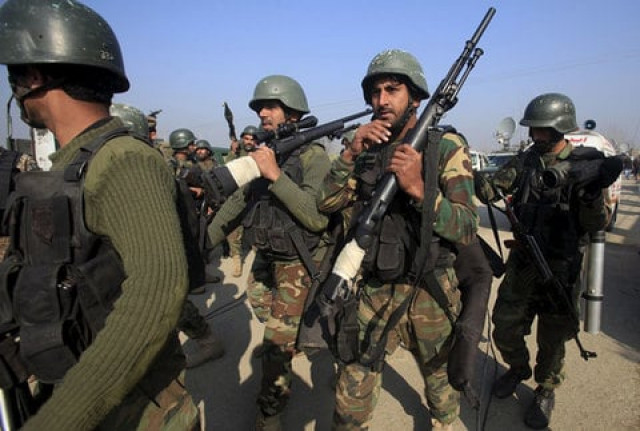
Army personnel walk outside the Bacha Khan University in Charsadda on January 20, 2016. PHOTO: REUTERS
Just after 9am Pakistani time (4.14am GMT) on January 20, four men wearing suicide vests attacked the university in Charsadda, about 40km from Peshawar in Pakistan’s Khyber Pakhtunkhwa province (formerly known as North-West Frontier Province).
Chemistry teacher defies Taliban in Bacha Khan University attack
The death toll has topped 30 people but is expected to rise, perhaps to as high as 70. Scores were also injured. Soldiers were quickly deployed to the scene. The army formally announced that the attack was over five-and-a-half hours later at 10.38 GMT – and also announced the deaths of the four attackers.
 Military helicopters arrive at the scene of the attack. PHOTO: REUTERS / FAYAZ AZIZ
Military helicopters arrive at the scene of the attack. PHOTO: REUTERS / FAYAZ AZIZThe attack may well have been timed to coincide with the anniversary of the death of Khan Abdul Ghaffar Khan who died on January 20 1988. He was the founder of the Red Shirt movement among the Pakhtuns of Pakistan – a movement that advocated nonviolent resistance to the Raj and also opposed the partition of the subcontinent into Pakistan and India.
A commander of the TTP, Omar Mansoor, claiming responsibility, said the attack had been a response to a military offensive against extremists in the tribal areas of Pakistan. Mansoor was also apparently responsible for planning the attack on a school in Peshawar in December 2014 that killed 141 people – more than 130 of them children.
Breakthrough achieved in identifying Charsadda attackers: DG ISPR
However, shortly after Mansoor claimed responsibility for the latest attack, other TTP leaders denied their involvement; claiming it was “against Shariah” and Mansoor removed the reference to responsibility from his Facebook page.
 Students flee the scene of the attack. PHOTO: REUTERS / FAYAZ AZIZ
Students flee the scene of the attack. PHOTO: REUTERS / FAYAZ AZIZThe existence of factions within the Pakistani Taliban is not new and the attack on the school in Peshawar in December 2014 was interpreted by some as Mansoor asserting control over the TTP. How the current struggle for power within the movement will play out from here is uncertain.
Attacks on educational institutions are common in Pakistan, and many are against facilities educating girls. These have typically not received the same attention as the Peshawar and the Charsadda attacks – partly because of the smaller number of casualties. Only three days ago, schools in Peshawar were closed following reports of a likely terrorist attack.
Attackers handled from Afghanistan: ISPR
Despite this, educational institutions generally remain soft targets. While security has been stepped up following the Peshawar attacks in December 2014 (a student was quoted as reporting that there were five security checks for students), how effective this has been must be questioned, as reports on how the attackers entered the university have focused on them accessing the back of the university through agricultural land, taking advantage of winter fog and low boundary walls.
Soft targets still vulnerable
The security situation in Pakistan has improved since the extremely high levels of violence seen in 2009. The South Asian Terrorism Portal reports that the number of fatalities in terrorist violence in Pakistan in 2009 was 11,704 – in 2015 this had fallen to 3,682. Levels of violence in Khyber Pakhtunkhwa have also declined since 2010.
Timeline of deadliest insurgent attacks in Pakistan
But this should not conceal the ability of the TTP to continue to wage violence against soft targets in attacks that achieve maximum publicity. In June 2014, after the attack on Karachi airport, the military launched Operation Zarb-e-Azb. This was one of the prompts for the attack on the army school in Peshawar in December 2014 – bringing the struggle home to the army’s high command.
However, rather than persuading the army to desist from its campaign, the attacks on the school in Peshawar prompted a constitutional amendment to enable military courts to try terrorism suspects. As a result, the numbers of those executed has grown rapidly and now stands at more than 300 – although many of those were not convicted of terrorism offences.
Daniel Bodirsky’s assessment of the success of Zarb-e-Azb in December 2015 for the International Institute for Strategic Studies (IISS) noted that it is difficult to assess the progress of the campaign, given the media blackout. However, he confirmed the overall picture of the declining levels of violence reported by the South Asian Terrorism Portal.
Nation in mourning: Blood on the campus
The recent events in Pathankot, an Indian airbase in Punjab attacked by terrorist groups in January 2016, were interpreted by some as a deliberate attempt to derail (slightly) improving relations between Pakistan’s prime minister, Nawaz Sharif, and the Indian prime minister, Narendra Modi, following the latter’s surprise visit to Pakistan on Christmas Day 2015.
Many of these terrorist groups are patronised by the Pakistani intelligence services, the ISI – and tensions continue between the civilians and the military over control of external and internal security.
Notwithstanding Operation Zarb-e-Azb, targeting the Pakistan Taliban, the TTP, there is little doubt in the minds of most analysts that Pakistan continues its patronage of the Afghan Taliban, to secure its objectives in Afghanistan.
The Pakistan army’s doctrine of “strategic depth” is premised on the belief that to prevent encirclement by India (through India’s friendly relations with Afghanistan), it must retain the capacity to intervene in Afghanistan, through the use of the Afghan Taliban as proxies.
Aftermath of Charsadda attack: Universities beef up security
Yet it is difficult in practice to separate the Afghan from the Pakistan Taliban. Whether Pakistan can ever truly crack down on individuals such as Omar Mansoor when it continues with its policy of selective covert support for its favoured terror groups, is – depressingly – very unlikely.
Katharine Adeney, Professor of Politics and Director of the Institute of Asia and Pacific Studies, University of Nottingham
This article was originally published on The Conversation. Read the original article.

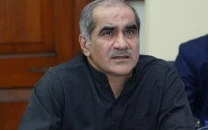
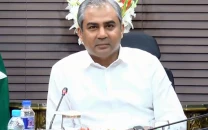
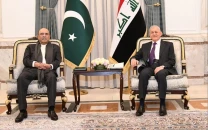

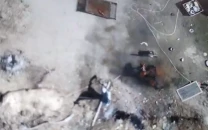
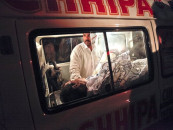












COMMENTS
Comments are moderated and generally will be posted if they are on-topic and not abusive.
For more information, please see our Comments FAQ